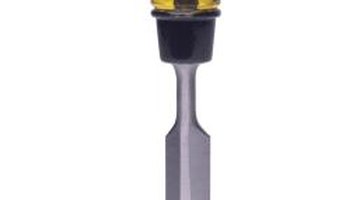The Different Parts of the Chisels
A chisel is a tool with a cutting edge and a handle grip. This type of cutting, carving and shaping tool is widely used in timber frame construction, furniture making, wooden shipbuilding and sculpture. Generally, they are designed to either rough out the shape of a pattern or design, or polish and finalize the details of a woodwork. Chisels can range from small hand tools meant to work on tiny details to large ones used to quickly remove chunks of wood.
Blade

A chisel's blade varies in shape and size depending on its specific use. The blade is driven by hand, or with the aid of a mallet or hammer. Each blade is composed of a chisel’s sub-parts including the cutting edge, bevel, bevel edge blade and shoulder. The cutting edge is the sharpest part of the blade, which is clearly used for purposes of cutting, carving or shaping. The bevel is the slope running from the top of the blade, while the bevel edge blade is the slope that runs along the sides of the blade. The shoulder is the part situated right below the bevel edge blade and right on top of the chisel's ferrule.
Ferrule
The ferrule is the brass or iron extension of the blade that attaches to the handle. This part of the chisel is usually shaped using a hacksaw and buffer-grinder. It serves as a ring or cap that strengthens one end of the chisel’s handle and prevents it from wearing out or splitting. With the chisel being used to strike hard surfaces, the durability and attachment of the ferrule are important to ensuring the handle won’t break when struck.
Handle
A chisel handle can be made of hard timber materials such as beech, oak, hickory or ash. There are also some made of plastic. The handle's shape makes it convenient for a person to grip and hold in various positions while cutting, carving and shaping a piece of wood. Chisel handles are typically made with a lathe.
Head
The head of a chisel is cut in a way that provides a right-angled edge or corner. The durability of the head is crucial to the wear and tear of the chisel as it is the part regularly hit with a hammer or mallet. The symmetrical sloping edge of the head also slows down the formation of a mushroom-shaped head, which is part of the wear out process due to the long-term effects of hammering.
References
Writer Bio
Rianne Hill Soriano is a freelance artist/writer/educator. Her diverse work experiences include projects in the Philippines, Korea and United States. For more than six years she has written about films, travel, food, fashion, culture and other topics on websites including Yahoo!, Yehey! and Herword. She also co-wrote a book about Asian cinema.
Photo Credits
- Comstock/Comstock/Getty Images
More Articles



